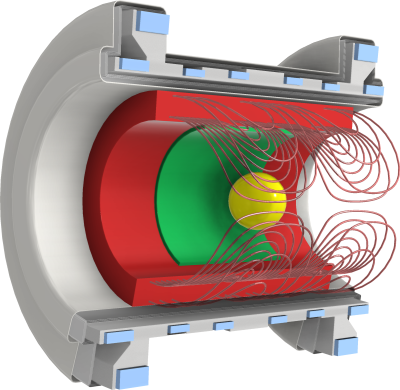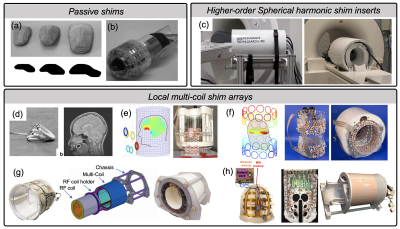Weekend Course
MR Engineering I: MR Systems for Experts-to-Be
ISMRM & ISMRT Annual Meeting & Exhibition • 03-08 June 2023 • Toronto, ON, Canada

| 08:00 |
The Magnet: Cryogen-filled to Cryogen-free
Thomas Foo
Keywords: Physics & Engineering: Hardware, Physics & Engineering: High-Field MRI, Physics & Engineering: Physics Outline of a presentation describing the differences in magnet design for a conventional cryogen-filled magnet and that of a cryogen-free magnet. |
|
| 08:25 |
 |
Gradient Coils
Sebastian Littin
Keywords: Physics & Engineering: Hardware The spatial encoding system, usually termed gradients, is crucial for magnetic resonance imaging (MRI). Gradient coils for MRI are usually designed using target field methods. The stream function method allows for approximating surface current densities by discrete wires. One of the main limiting factors of gradient coils in MRI is given by physiological constraints, namely peripheral nerve stimulation (PNS). As PNS properties of smaller coils are beneficial, head insert coils are experiencing a revival. Further localized, application-specific coils might be used to overcome today’s limitations. Different approaches have been used to implement complex wire geometries into realizable coil designs. |
| 08:50 |
 |
B0 Shimming: Coils and Methods
Jason Stockmann
Keywords: Physics & Engineering: Hardware, Physics & Engineering: Physics We describe how tissue susceptibility interfaces disturb the main B0 magnetic field inside the scanner bore, causing a wide variety of artifacts in MR acquisitions. We review field mapping approaches for measuring these ΔB0 field deviations, along with factors influencing field map accuracy and precision. Hardware for nulling the unwanted ΔB0 fields is then covered, including both passive shim inserts and active shim coils. We show how to simulate B0 shim performance for specific shim coils as well as for the "ultimate shim" using optimized coils. Last, we highlight open-source resources including shim optimization software and published coil wire patterns. |
| 09:15 | RF Frontend Boris Keil | |
| 09:40 |
Break & Meet the Teachers |
|
| 10:05 |
Transmit Coils
Elmar Laistler
Keywords: Physics & Engineering: Hardware This lecture covers different aspects of transmit coils, ranging from coil types, associated circuitry and components to safety aspects. |
|
| 10:30 |
Receive Coils & Combined Shim-RF Arrays
Hui Han
Keywords: Physics & Engineering: Hardware, Physics & Engineering: High-Field MRI, Body: Body In this lecture, we'll explore the use of receive coils, including newly developed combined shim-RF arrays (1-7), for high-field imaging. Traditional volume RF coils are replaced by phased array coils, which use local RF surface coils on the human body for improved sensitivity and faster imaging. But B0 field inhomogeneity remains a major challenge for many high-field MRI applications. We'll discuss the concept of combined shim-RF arrays, which integrate a shim array into a receive coil to address this issue and improve image quality. |
|
| 10:55 |
Characterization of Coils on the Bench
Karthik Lakshmanan
Keywords: Physics & Engineering: Hardware During RF coil design and construction process characterization (bench testing) is a necessary step to ensure coil functionality and optimal performance. This lecture will explore and elaborate on critical functional and performance metrics of RF Coils. |
|
| 11:20 |
Break & Meet the Teachers |
The International Society for Magnetic Resonance in Medicine is accredited by the Accreditation Council for Continuing Medical Education to provide continuing medical education for physicians.